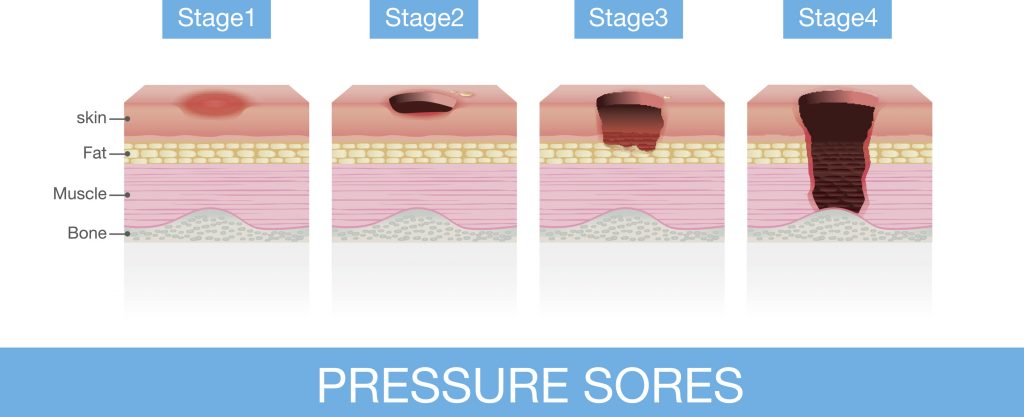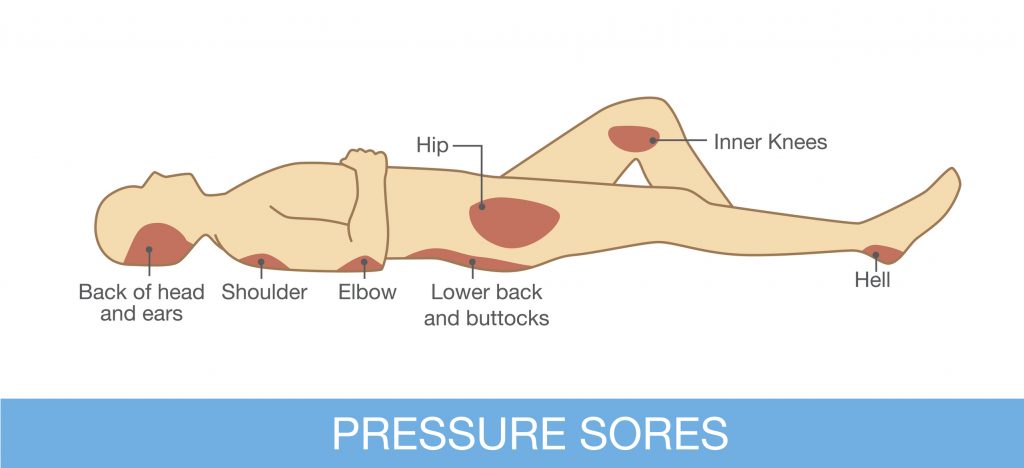Sepsis and Pressure Ulcers: Infected Sores Can Lead to Sepsis
August 23, 2019
Pressure ulcers, skin sores, have always been a problem for people who must stay in bed for extended periods and those who use wheelchairs for mobility. It is one of the first things nursing students are taught about patient care because, depending on a patient’s health, skin breakdown can begin in hours. Pressure ulcers can also occur for other reasons. For example, ill-fitting shoes can cause rubbing and sores and someone who has a leg or arm amputation could develop a pressure ulcer where the limb meets their prosthetic. The cause for pressure ulcers is simple: pressure on the skin prevents blood flow to the tissue. This blood flow is essential because it brings oxygen and nutrients to the skin to nourish it and keep it healthy. The longer the pressure is present and the harder the pressure, the more blood is prevented from circulating.
These ulcers, also called pressure injuries, pressure sores, bedsores, and decubitus ulcers can be prevented, but treating them once the skin breakdown has begun can be challenging. The location, the cause, and the patient’s overall state of health, play a role in this.
The first stage of a pressure ulcer is a spot that is reddened or darker than usual. If you press on the skin with your finger and release it, the blood doesn’t flow back quickly as you might expect. At this point, if you make sure there is no more pressure to the skin, the skin should regain proper blood flow and heal without any extra interventions. Once the skin breaks, however, there is an opening that could allow bacteria to enter, causing an infection.

Many people who get pressure ulcers are already compromised in some way. If they are hospitalized, they are already ill and also are exposed to germs from other patients, visitors, and staff. If the pressure ulcer is on the coccyx (tailbone), buttocks, or the genital area, infection rates increase because the open wounds may be touched by urine or stool. If they wear briefs (adult diapers), the moist environment can also encourage infections. If someone has a pressure ulcer, infection prevention is essential.

Learn more about how pressure sores can be related to sepsis in our new library offering, Sepsis and Pressure Ulcers (Pressure Injuries).





























